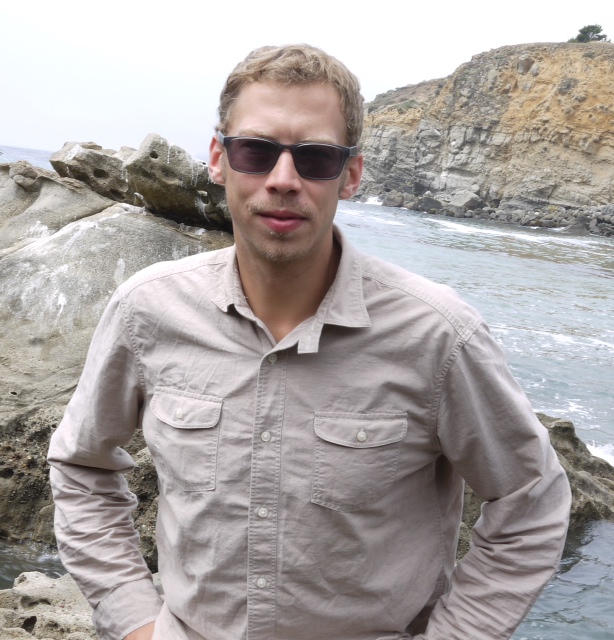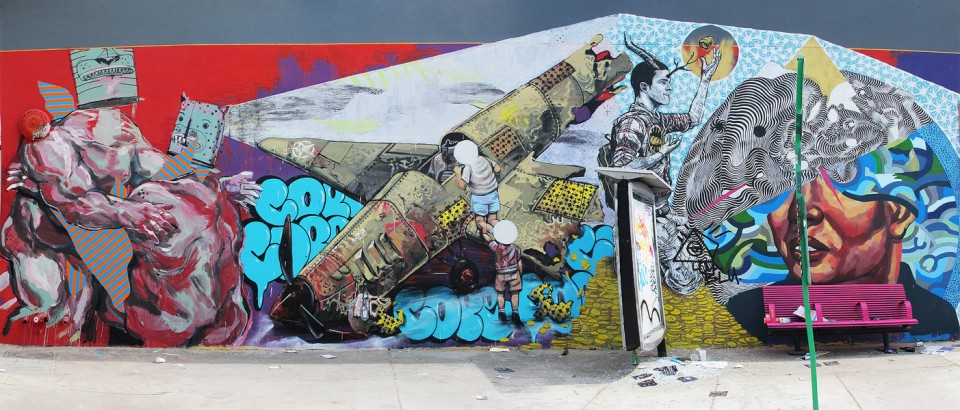I
Art does not exist by itself. Art only emerges dialogically through the multi-faceted processes of an artist creating something and people experiencing that creation. In this way, it may be safer to say “art only exists in time,” or that “art is a process.” Focusing on the dialogues that bring art into existence explodes the barriers that have become at once most familiar to us and most alienating. Indeed, within these dialogues, we can observe the formative interactions between artists and their influences, and how their own works might potentially influence audiences. What I wish to confront is the idea that art exists outside the realm of social construction; to remove art from communication and understanding provokes a pathological derangement of humans as social animals. In critiquing this odd schizophrenia wherein dialogue produces disconnect and reduces understanding we can confront and seek to understand the terrifying condition of being in the world. This action forces us to confront the specter of ourselves staring back from a funhouse mirror, distorted and ultra-real.
One of the primary dialogues through which art emerges is the elicitation of feeling, of emotional responses, and the inducement of introspection in the observer beyond simply pondering or deconstructing the signs coded by the artist. The artist provides the vehicle and the audience can drive it wherever they want. The artist will never know where they go and shouldn’t care. This may seem to reduce interaction, but not if we bend time a little and think of it with a deeper, less individualistic humanism. In this way art should evoke the real, should be genuine and transparent in the sense that the design of the artist or the piece should be clear, even if the intent is to purposely vale or entangle the artist’s motives. This is not to say that heavily coded pieces are devoid of emotion, but that the often teleological drive toward innovation comes across as masturbation just as the young often mistake lust for love. Contemporary art, for example, is displayed (and perhaps produced) with unreasonable extrapolation of intent whose necessary accompaniment is often a labyrinthine statement decipherable only with some obscure decoder ring found at the bottom of an overly abstracted,and at the worst reductionist box of jargon-laced snack food. While the ways in which art is observable or creatable are numberless, the ways it is often observed or created can become atrophied by the self-referential schema of art’s mainstream historicity, which denies engagement with the emotive and creative exploration basic to its evolution.
At the risk of ushering in nostalgia or ignoring the potentialities of new forms such as the digital, I assert that the ignorance of the dialogic emergence of art disconnects the artist and observer through the perpetuation of non-permeable discourse. Disconcertingly, this impenetrable modality suspends and imprison art in popular understanding within a vacuum or oubliette from which the observer and the artist encounter it. Like a well-crafted ideological apparatus of the State, the production and consumption of art have been relegated to an entrenched position opposite the signs and concepts of freedom, creativity, and expression that have traditionally been the bastions of our understanding. The peril of this position is it runs contrary to the phenomenological motivation of most artists as well as how we often experience art as members of an audience. Worse still, when an artist becomes successful or notary the pressure to repeat or expand within the same modality can further isolate them from the forces driving their performance at inception. This is compounded by the fact that the audience can create this pressure, and that it is often magnified by the institutions that primarily generated the recognition.
II
I do not believe I am an artist. Other people who are not me may disagree; Tom obviously does. This is strange because, by my own definition outlined above, I have produced art in my life. Thus I would limit the statement to: I have produced art. At one time I did not believe this. I believed art was something out there, existing beyond the maker and ensuring some kind of immortality. I believed that artists need to make art and that anyone who was not compelled to do so was not an artist. I no longer think this way. Everyone everywhere needs to do something, but what matters is if they do it. It is doing nothing that is the enemy.
The limitations of individual expression emanate from institutionalized social organization in a way that cripples potentiality instead of championing it. This may be most apparent within education, although these seemingly negative constraints pale in comparison to a lack of educational resources. Exacerbating this, the depression of regional culture in favor of a computer mediated monocultural meshwork from which inspiration, methodology, and style are derived have pushed art into dangerously discursive and sophomoric territory even as diversity seems to grow. The danger here is that we forget the basic connections through which creative expression functions in the first place, and risk treatment of the very fabric of aesthetics with a cruel indifference and irony rendering any moves impotent by reproducing the order as is.
Doing art is doing life. Art is work. Art is deep exploration of technique and medium. Therefore, in the radical genuine, change is an inseparable aspect of living. A refusal of static models means that the artist is community, art does, art is for everyone, and the conditions under which it is made cannot be isolated from the conditions of being in the world. The artist is neither modest witness nor clandestine observer, and only through participation in the creation and maintenance of a medium of exchange can the artist fulfill their goals of creating dialogue, be it with themselves or a larger imagined community. At the baseline, art is expression embedded in the ideologies of the producer’s and consumer’s enculturated bodies. Because of this intimacy, art enjoys a privileged proximity with many of our most basic human attributes. To this end, I believe future art forms should focus on extending dialogue across cultural, socio-economic, political, and geographical borders in order to facilitate greater understanding of ourselves and our place in the world.
Buffalo, NY
April 29th, 2013







